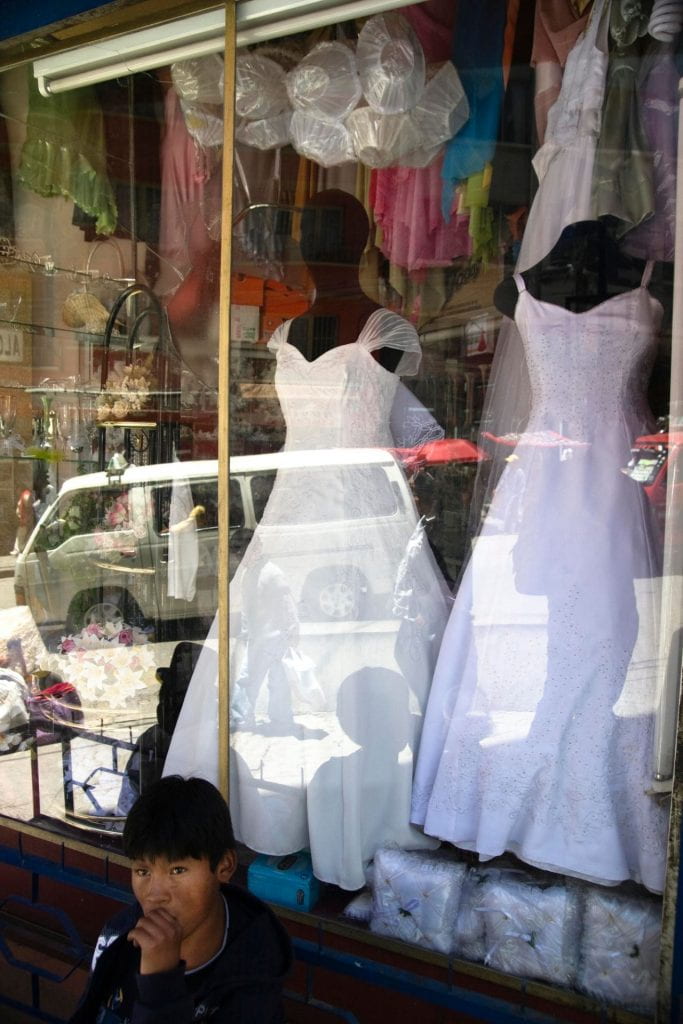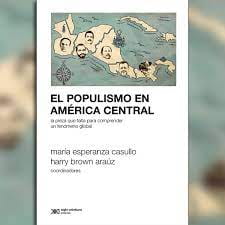The Bolivian Economy
Snapshot or MRI?
A few years ago I attended a meeting of Latin American countries in which the participants were divided up by geographic areas. I automatically went to look for my neighbors from Peru and Chile. When I entered the room marked “Southern Cone,” I was stopped by one of the organizers who told me that Bolivia had been grouped with Central America. My first reaction was indignation at my hosts’ geographic ignorance; I felt like shoving a world map into their hands. Fortunately, I restrained myself. It crossed my mind that even though from a territorial perspective Bolivia is in the heart of the Latin America’s southern cone, from the point of view of human and economic geography, it is plausible to lump it together with countries like Nicaragua and Honduras. Indeed, many of our structural indicators—percentage of indigenous population, levels of poverty and inequality, size of the gross domestic product (GDP), productive diversification and institutional development—are more similar to those of Central America than those of our neighbors in the southern cone. These indeed were the criteria used to group countries in the international event in which I was participating.
Expectations for change in Bolivia’s economic and political model were enormous in 2006, when the first indigenous president, Evo Morales, took office. The country was booming. Many hoped the bonanza of foreign revenue would allow Bolivia to overcome low economic growth and poverty, thus ceasing to be the poorest country in South America. Looking at five years of the president’s mandate, it is apparent that an evaluation of the performance of the Bolivian economy needs to be made on two levels. The first is macroeconomic, a snapshot of the economic situation. The second is a tomography, a sort of deeper structural look, a kind of imaginary MRI of the country’s productive apparatus.
The Bolivian economy grew at an average of 4.5% yearly between 2006 and 2010. This result is quite similar to the growth rate during the period of the height of neoliberalism between 1994 and 1998. The growth of the gross national product in Bolivia, in addition to being quite low compared to the rest of the Latin American region, is very sensitive to the booms and busts of international prices for natural resources and the volatility of foreign investment.
In these five years we are looking at, the unemployment rate in Bolivia in the formal sector was reduced to 7%. However, this statistic applies to only 20% of the employed population; the remaining 80% just eke out their living in the informal sector with low quality jobs and without any type of social protection such as health insurance.
During the first five years of President Morales’ administration, the inflation rate was very volatile. In 2006, it was 4.95%, quite similar to that of the previous three years. In the meantime, in 2007-2008, prices spiraled upwards, registering a hike of 12% yearly as a result of increases in food prices. In 2009, inflation was sharply reduced to .26%, but jumped up again to 7.18% in 2010.
During this five-year period, the Bolivian economy also registered a fiscal surplus, a positive trade balance, and a significant increase in international reserves mounting to more than ten billion dollars. These figures show that Bolivia’s macroeconomy performed splendidly, to a large extent because of favorable exchange rates and higher income obtained through the nationalization of the petroleum industry. Indeed, the prices of the raw materials exported by Bolivia tripled between 2006 and 2010.
These macroeconomic results also reflect the high level of continuity in the management of economic policy, in spite of all the talk about change. In effect, President Morales’ macroeconomic policy reflects a strong influence of the goals and instruments of the neoliberal period, and this policy was not integrated enough towards promoting economic growth and better quality jobs. Monetary and exchange policies of the Morales administration were focused on controlling inflation, maintaining an anti-productive bias, just as they had in the past. Only after the 2008-2009 world financial crisis did monetary policy become more flexible and promote the reduction of interest rates. However, even these lower rates did not provide incentives for the private sector to take on debt, because of institutional and preexisting structural restrictions in the Bolivian market such as the size of the businesses and guarantees.
Fiscal policy was much more proactive in the social area. The Morales administration maintained a voucher for senior citizens known as Renta Dignidad and created conditional transfers of money for women and children known as the Juana Azurduy de Padilla program.
Although partial improvement can be seen in the macroeconomic “photography,” no significant changes were registered in the “tomography”—its MRI, if you will—of the Bolivian economy. The country’s economic structure conceals old and new ailments that keep the country from an integral economic and social development.
A deeper look—our symbolic tomography—shows, for example, that the Bolivian economy has gone back to being just as highly dependent on natural resources as it was in the 1930s. Public investment continues to concentrate resources in traditional sectors such as hydrocarbons and mining. In 2010, the exports of minerals, natural gas and soy represented 80% of sales on the world market, while industrial products represented only 20% of the exports. Bolivia has returned to a primarily export and rentist econmy that makes it vulnerable both in the external sector and in the national exchequer, with more than 50% of its income coming from natural gas alone.
The Bolivian economy suffers from the so-called Dutch disease—the overdependence on natural resources—and the clearest indicator of this is the increasing exchange rate. Dutch disease is producing growth without wealth, deindustrialization of the little industry Bolivia has and curbs on the growth of development of a productive infrastructure. This theme is complicated even more by governmental insistence on maintaining a fixed exchange rate, which is damaging to exports with a value-added component and also foments both legal and illegal imports.
The informal economy, stimulated by these imports, has spiraled in terms of both goods and services and in an indirect manner is linked to contraband and drug trafficking. In the year 2000, imports barely reached $19 billion dollars, while in 2010, they surged to $70 billion. Legal and illegal trade grew in a substantial way with financing from the trade surplus and the explosion of international remittances.
The hypertrophy of the informal sector in goods and services also contributes to the strangulation of the already weak industrial sector, which is less competitive because of the increasing exchange rates, and which has also lost external markets for ideological reasons. For example, textile exports to the U.S. market have been shut down because of the diplomatic distancing caused by the expulsion of the U.S. ambassador to Bolivia.
Another ailment that is clearly seen in the Bolivian economy is the drop in productivity, particularly in the public sector. Serious problems of administration, inefficiency, corruption, institutional weakness and difficulties in implementation of public investment are some of the symptoms of this economic illness.
The oil industry in particular is suffering from anemia and atrophy. In particular, the public oil company Yacimientos Petrolíferos Fiscales Bolivianos, which ought to be the banner for change, has not taken off because of management problems and lack of financial resources. The level of investment in the oil sector is quite low, and this inactivity has translated into stagnation of the proved reserves of natural gas. Moreover, natural gas exports have declined, a nationalization damaged Bolivia’s relations with neighboring markets, particularly that of Brazil. And because of the lack of investment in the petroleum sector, Bolivia has actually tuned into an importer of diesel and gasoline.
To sum up, this tomography demonstrates that Bolivia’s productive structure is returning to primary goods, lack of human capital, institutional weakness, enormous growth in the informal economy, low levels of technological innovation, precarious employment, little diversification and industrialization, and low levels of productivity both in the public and private sectors. The macroeconomic figures make us look like a middle income country, according to the World Bank, which brings us closer to the economic tendencies of the neighboring countries. However, the tomography indicates structural bottlenecks which make us more like the Central American economies. As we observed in the 80s, the macroeconomy is getting on fine, but the people are getting on poorly.
As the neoliberal administration had done earlier, President Morales’ government continues to bet on macroeconomic results in spite of his promise of productive changes evident in the new constitution. The tomography of the Bolivian economy also shows that the country holds great productive potential in areas like tourism, textiles, organic products and the forest industry. However, to deliver on this potential requires a productive revolution that abandons the economic and political logic tied strictly to natural resources.
Gonzalo Chávez A. is the director of the School of Production and Competitivity, Universidad Católica San Pablo, La Paz. An economist with doctoral studies at the University of Manchester (England), he holds a Master’s in Public Policy from Harvard Kennedy School. E-mail: gchavez@mpd.ucb.edu.bo
Related Articles
A Review of Alberto Edwards: Profeta de la dictadura en Chile by Rafael Sagredo Baeza
Chile is often cited as a country of strong democratic traditions and institutions. They can be broken, however, as shown by the notorious civil-military dictatorship of Augusto Pinochet (1973-1990). And yet, even a cursory view of the nation’s history shows persistent authoritarian tendencies.
A Review of Born in Blood and Fire
The fourth edition of Born in Blood and Fire is a concise yet comprehensive account of the intriguing history of Latin America and will be followed this year by a fifth edition.
A Review of El populismo en América Latina. La pieza que falta para comprender un fenómeno global
In 1946, during a campaign event in Argentina, then-candidate for president Juan Domingo Perón formulated a slogan, “Braden or Perón,” with which he could effectively discredit his opponents and position himself as a defender of national dignity against a foreign power.





